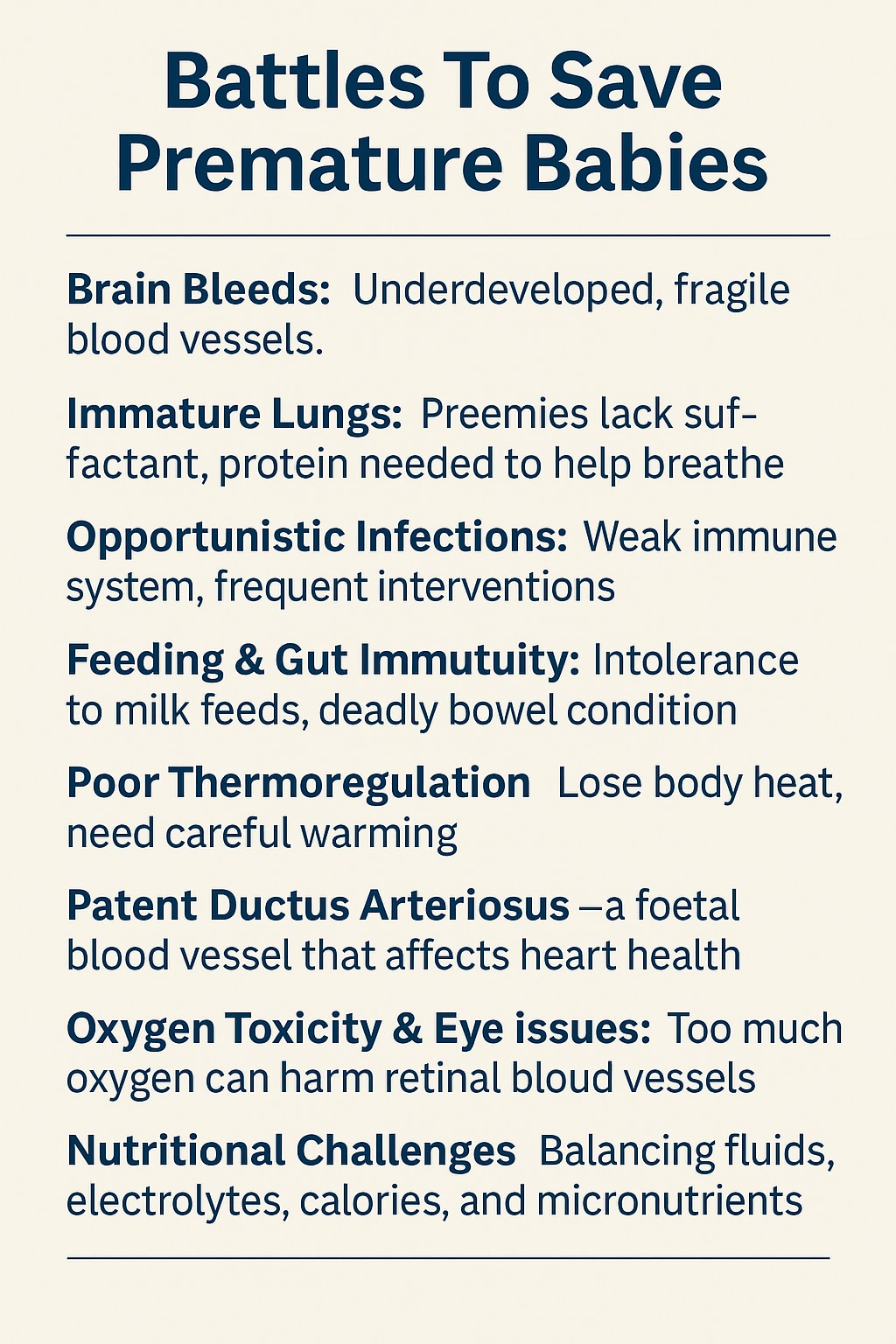A 46-year-old diabetic and hypertensive woman in India gave birth to IVF-conceived triplets at just 25 weeks of gestation earlier this year, and all three babies survived without any complications after spending 75 days in intensive neonatal care — in an extraordinary medical breakthrough. The children, born in late January, were all discharged on April 10.
The mother, a Delhi University professor, had faced prolonged infertility and a high-risk pregnancy. This was her only and final chance at motherhood, experts at Amrita Hospital, Faridabad, where the babies were treated, said. Delivered via emergency C-section, the triplets — all girls, weighing a combined 2.5 kg — were born so prematurely that their survival was initially uncertain, and the facility where they were born reportedly threw up their hands in despair. The babies were then brought to Amrita Hospital, and are now healthy and back home, setting a new milestone for extreme prematurity outcomes in India.
No Ventilators, No Infections, No Complications
Defying global odds, none of the babies required mechanical ventilation — a rarity at this gestational age. Only one needed a single dose of surfactant (a protein needed to keep air sacs open), and another required a blood transfusion. All three were started on enteral feeding within nine hours of birth and transitioned to full mother’s milk by day four — exceeding international benchmarks.
A team of over 20 NICU nurses and doctors, led by Dr Hemant Sharma, Senior Neonatologist at Amrita Hospital, were involved in the feat.
“These were incredibly fragile babies, born far too early,” said Dr Sharma. “We focused on the basics — non-invasive respiratory support, timely breast milk feeding, and vigilant monitoring. What we saw was a steady path to strength and stability. This case proves what is possible with precision care and teamwork.”
Remarkably, across their NICU journey, the triplets recorded zero hospital-acquired infections and no intraventricular haemorrhages (brain bleeds) — a common concern in extremely premature infants.
Even while recovering in the ICU, the mother remained deeply engaged, expressing breast milk and staying connected with her newborns — a key contributor to their immunity and growth. Donor milk was also used as a critical supplement, pointing to the need for a stronger human milk banking network in India.
Global Echoes: From India To Singapore And US
While this is a first-of-its-kind outcome for triplets in India, similar inspiring cases have made headlines globally. In Singapore, a baby girl named Kwek Yu Xuan, born at just 212 grams — lighter than an apple — stunned the world by surviving against all odds after spending 13 months in NICU. Delivered at 24 weeks due to life-threatening pre-eclampsia in her mother, Yu Xuan is now thriving at 6.3 kg, according to Singapore’s National University Hospital (NUH). Doctors had initially given her “limited chances of survival”.
Globally, these stories are captured in the ‘Tiniest Babies Registry’ created by Dr Ed Bell at the University of Iowa, US. The registry tracks babies born under 400 grams who survive. It’s not about setting records, but about giving hope, according to Dr Bell.
“It’s so we don’t automatically say, ‘There’s no hope,’” Dr Bell said. “Prematurity is not a cause of death. These babies can survive and thrive — with the right care.”
ALSO READ | Stressed Moms, Struggling Babies: The Hidden Impact Of Maternal Mental Wellbeing
A Beacon For India’s Premature Newborns
India sees over 3.5 million premature births each year, with around 300,000 child deaths under age five. This case at Amrita Hospital offers a powerful example of what’s possible when high-risk pregnancies receive protocol-driven, evidence-based neonatal care.
“This was not just about medicine — it was about resilience, coordination, and compassion,” said Dr Sharma. “We didn’t give up. And today, all three daughters are going home.”
As India works towards its goals under the India Newborn Action Plan and Sustainable Development Goal (SDG) 3.2, this case is a clarion call — to invest in neonatal infrastructure, boost nursing capacity, support maternal nutrition, and expand access to donor milk.
The writer is a senior independent journalist.
Check out below Health Tools-
Calculate Your Body Mass Index ( BMI )

